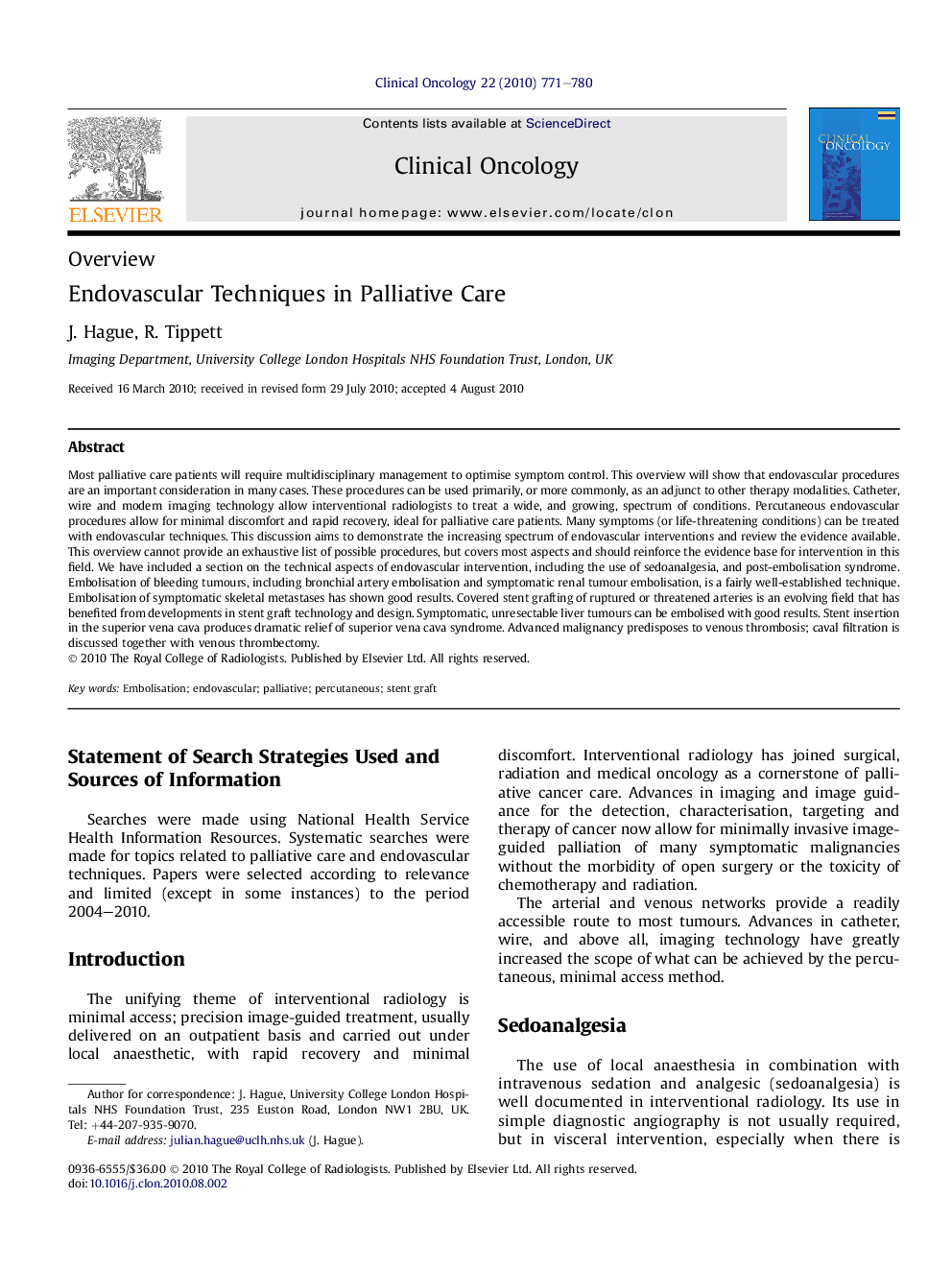| Article ID | Journal | Published Year | Pages | File Type |
|---|---|---|---|---|
| 5700103 | Clinical Oncology | 2010 | 10 Pages |
Abstract
Most palliative care patients will require multidisciplinary management to optimise symptom control. This overview will show that endovascular procedures are an important consideration in many cases. These procedures can be used primarily, or more commonly, as an adjunct to other therapy modalities. Catheter, wire and modern imaging technology allow interventional radiologists to treat a wide, and growing, spectrum of conditions. Percutaneous endovascular procedures allow for minimal discomfort and rapid recovery, ideal for palliative care patients. Many symptoms (or life-threatening conditions) can be treated with endovascular techniques. This discussion aims to demonstrate the increasing spectrum of endovascular interventions and review the evidence available. This overview cannot provide an exhaustive list of possible procedures, but covers most aspects and should reinforce the evidence base for intervention in this field. We have included a section on the technical aspects of endovascular intervention, including the use of sedoanalgesia, and post-embolisation syndrome. Embolisation of bleeding tumours, including bronchial artery embolisation and symptomatic renal tumour embolisation, is a fairly well-established technique. Embolisation of symptomatic skeletal metastases has shown good results. Covered stent grafting of ruptured or threatened arteries is an evolving field that has benefited from developments in stent graft technology and design. Symptomatic, unresectable liver tumours can be embolised with good results. Stent insertion in the superior vena cava produces dramatic relief of superior vena cava syndrome. Advanced malignancy predisposes to venous thrombosis; caval filtration is discussed together with venous thrombectomy.
Related Topics
Health Sciences
Medicine and Dentistry
Oncology
Authors
J. Hague, R. Tippett,
